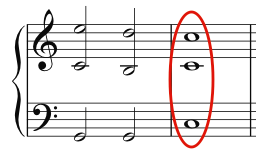what is a chord?
In other words, what does a chord do. If you encounter something that doesn't do those things, then you shouldn't call it a chord in that sense. (The "is" word is called a copula https://en.wikipedia.org/wiki/Copula_(linguistics) and your question is basically a general request for explanations about the problem domain where the word "chord" is used - and the answers better be focused around sentences about doing, not other copulas)
What does a chord do?
Chords explicate, bring out several features about the harmonic context at the same time. Chords are capable of explicating more features per time unit than a single-voice melody line, so they have more harmonic expressive power. Chords are harmonic bulldozers compared to single-note shovels.
When you listen to music, your ear constantly tries to keep track of a few important things:
- (1) what is the home note, i.e. tonic. That's the home position.
- (2) what is the expected harmony, i.e. set of intervals around the home note. This is the home shape.
- (3) are we at home now, i.e. is the harmonic position and shape of the set of currently sounding notes sitting on the tonic and in the home shape, or is it away from the tonic in some way, or in a non-home shape.
The harmonic context around the tonic is defined in a space of one single octave. A single note, say, C, can only explicate "C". It doesn't say which octave, because there are no octaves in the harmonic context. The set of octaves and that kind of spacing has more to do with timbre than harmony. If you have a chord C, E, G, you can voice it in many ways by spreading the notes in different octaves, and it will create a different sound, but harmonically it still only does the same thing any C major triad does. It says three things: (1) there is a C, (2) there is an E, and (3) there is a G. (plus, the lowest note is an extra feature, but IMO that's not relevant for the chord vs non-chord question)
When you have one or two or three or a thousand different sounding C notes, even the whole mass of them only says "there is a C", that's all. That's a very weak harmonic device! Definitely not a bulldozer. The so-called "power chord" is actually a weak harmonic device, not harmonically powerful at all. It is powerful in terms of timbre and for putting more weight to its root note.
If you hear an F major chord as the set of currently sounding notes, but in your mind you've established C major as the tonic position and shape, then you feel that you're not at home. You want to hear a C major to make yourself feel that you returned home. Or at least a plain C note that leaves room for imagining the C major around it. If you only hear a single F note, it doesn't leave room for imagining this - you are not at home with any stretch of imagination ... unless you keep playing the F note for so long that in your mind you move your bed and fridge there. This usually happens in about a minute.
"Is this a ... "
Language is always used in a context. What is your context? When is it justifiable to call something a chord? Will doing that labeling be good or bad for your intentions?
Is this a chord? Is it major, minor or suspended? Cluster chord? If you heard that played, would you say you heard a chord? Did you hear one pitch or multiple pitches? Regardless of instrument? If you sample this, can you play melodies with it? Can you play other chords with it?

How about this one, is it a chord?

Is the following a chord? The two half-notes in the first bar are most definitely chords, but would you say it ends on a non-chord?

Consider your context and make up your own mind. :)



